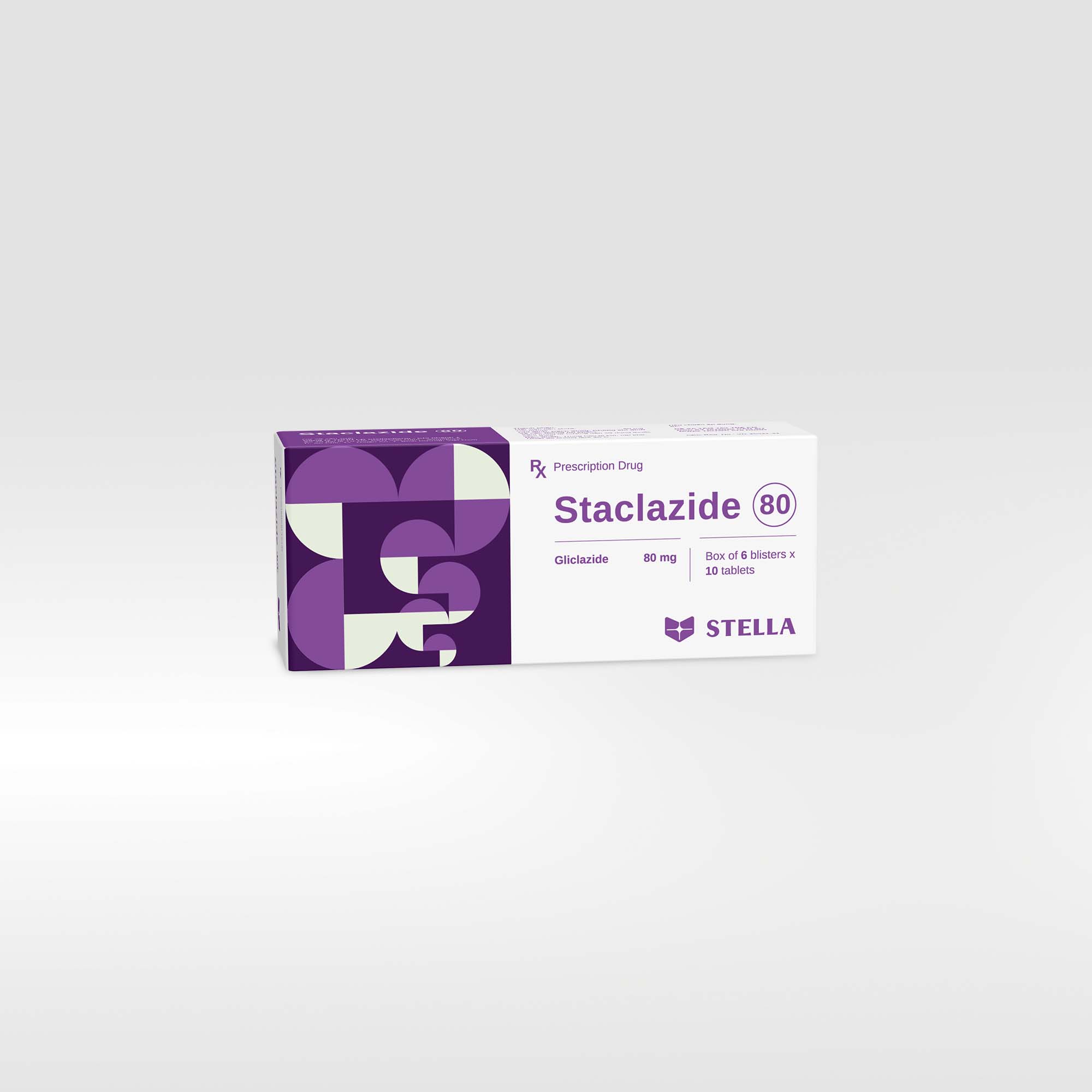Hypoglycaemia
- This treatment should be prescribed only if the patient is likely to have a regular food intake (including breakfast). It is important to have a regular carbohydrate intake due to the increased risk of hypoglycaemia if a meal is taken late, if an inadequate amount of food is consumed or if the food is low in carbohydrate. Hypoglycaemia is more likely to occur during low-calorie diets, following prolonged or strenuous exercise, alcohol intake or if a combination of hypoglycaemic agents is being used.
- Hypoglycaemia may occur following administration of sulfonylureas. Some cases may be severe and prolonged. Hospitalisation may be necessary and glucose administration may need to be continued for several days.
- Careful selection of patients, of the dose used, and clear patient directions are necessary to reduce the risk of hypoglycaemic episodes.
- Factors which increase the risk of hypoglycaemia:
Patient refuses or (particularly in elderly subjects) is unable to co-operate,
Malnutrition, irregular mealtimes, skipping meals, periods of fasting or dietary changes,
Imbalance between physical exercise and carbohydrate intake,
Renal insufficiency,
Severe hepatic insufficiency,
Overdose of Staclazide 80,
Certain endocrine disorders: Thyroid disorders, hypopituitarism and adrenal insufficiency,
Concomitant administration of certain other medicines.
Renal and hepatic insufficiency
- The pharmacokinetics and/or pharmacodynamics of gliclazide may be altered in patients with hepatic insufficiency or severe renal failure. A hypoglycaemic episode occurring in these patients may be prolonged, so appropriate management should be initiated.
Patient information
- The risks of hypoglycaemia, together with its symptoms, treatment, and conditions that predispose to its development, should be explained to the patient and to family members. The patient should be informed of the importance of following dietary advice, of taking regular exercise, and of regular monitoring of blood glucose levels.
Poor blood glucose control
- Blood glucose control in a patient receiving antidiabetic treatment may be affected by any of the following: St. John’s Wort (Hypericum perforatum) preparations, fever, trauma, infection or surgical intervention. In some cases, it may be necessary to administer insulin. The hypoglycaemic efficacy of any oral antidiabetic agent, including gliclazide, is attenuated over time in many patients: this may be due to progression in the severity of the diabetes, or to a reduced response to treatment. This phenomenon is known as secondary failure which is distinct from primary failure, when an active substance is ineffective as first-line treatment. Adequate dose adjustment and dietary compliance should be considered before classifying the patient as secondary failure.
Dysglycaemia
- Disturbances in blood glucose, including hypoglycaemia and hyperglycaemia have been reported, in diabetic patients receiving concomitant treatment with fluoroquinolones, especially in elderly patients. Indeed, careful monitoring of blood glucose is recommended in all patients receiving at the same time Staclazide 80 and a fluoroquinolone.
Laboratory tests
- Measurement of HbA1c levels (or fasting venous plasma glucose) is recommended in assessing blood glucose control. Blood glucose self-monitoring may also be useful.
Staclazide 80 contains lactose. Patients with rare hereditary problems of galactose intolerance, total lactase deficiency or glucose – galactose malabsorption should not take this medicine.
Treatment of patients with G6PD-deficiency with sulfonylurea agents can lead to haemolytic anaemia. Since gliclazide belongs to the class of sulfonylurea agents, caution should be used in patients with G6PD-deficiency and a nonsulfonylurea alternative should be considered.
The product is contraindicated in pregnancy and breast-feeding mothers.
Staclazide 80 has no or negligible influence on the ability to drive and use machines. However, patients should be informed that their concentration may be affected if their diabetes is not satisfactorily controlled, especially at the beginning of treatment.











